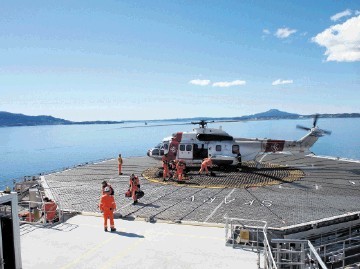
What happens to a wealthy, oil-reliant nation when crude prices collapse and unprecedented monetary easing threatens to scupper returns for its sovereign wealth fund?
Yngve Slyngstad, who manages Norway’s $900 billion wealth fund, has said many times in the past year that in a low-and even negative-interest rate world the fund will not be able to hit its expected 4 percent real return.
The real world impact is that fiscal spending will need to be checked.
The Norwegian government has a self-imposed rule capping use of the fund’s money in its budget to the expected return. That has meant increased spending each year, in krone-terms, as the fund has ballooned in size. The current minority coalition said in October it will use a record 164 billion kroner ($21.8 billion) in 2015, or about 3 percent of the fund.
Slyngstad revealed Wednesday that in the first quarter the fund received the lowest amount of new capital in 16 years.
The Finance Ministry transferred a mere 5 billion kroner ($662.5 million), a far cry from the 128 billion kroner in the third quarter of 2008 after crude prices peaked at about $147. Inflows are generated from taxes on oil and gas, petroleum field ownership and dividends from its majority stake in Statoil ASA, its biggest crude producer.
Oil is not far from the $60 threshold that central bank Governor Oeystein Olsen in February warned would mean that transfers to the fund “may come to a halt.”
Norway’s vast petroleum reserves in the North Sea and all the way up to the Arctic has made it very wealthy. The fund was designed to safeguard income for future generations when the oil industry is no longer the main growth engine.
For now, letting oil and gas makeup almost a quarter of its gross domestic product has helped it keep ubiquitous threats such as joblessness and a shrinking economy at bay (that giant oil fund has done its part here, too).
With the government preparing to unveil a revised budget due May 12, it faces pressure from all sides. Survey unemployment reached 4.1 percent in February, the highest since at least 2006, so there are expectations the budget will provide some relief.
But lawmakers today risk spending money they say is for their great-great-grandchildren — all on an economy that, compared to its neighbors, is doing pretty well.
Recommended for you
